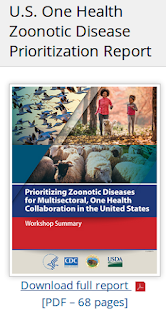#15,283
Sounding like something out of George R. Stewart's groundbreaking 1949 post-apocalyptic novel Earth Abides - where nature slowly reclaims previously human-occupied cities - newspaper headlines this weekend are warning of hordes of `aggressive rats' flourishing due to the COVID-19 pandemic.
A few examples include:
Beware of 'aggressive' rats on the hunt for food ... - Miami Herald
CDC warns rats are becoming more aggressive and cannibalizing each other as they struggle to find food amid restaurant closures - UK Daily MailAlthough we've seen reports for a couple of months of increased rat activity in large cities (see NatGeos April 3rd Rats come out of hiding as lockdowns eliminate urban trash), these latest new warnings stem from a rather staid bit of COVID-19 community guidance, posted on the CDC's website 4 days ago.
With restaurants closed, rat sightings are increasing across the United States - CNN
Rodent Control
Jurisdictions have closed or limited service at restaurants and other commercial establishments to help limit the spread of COVID-19. Rodents rely on the food and waste generated by these establishments. Community-wide closures have led to a decrease in food available to rodents, especially in dense commercial areas.
Some jurisdictions have reported an increase in rodent activity as rodents search for new sources of food. Environmental health and rodent control programs may see an increase in service requests related to rodents and reports of unusual or aggressive rodent behavior.
Eliminate Conditions That Attract Rodents
Follow established guidelines when cleaning up after rodent infestations to prevent exposure to rodent-borne diseases.
During rodent-related service calls and inspections, environmental health practitioners should advise residents and business owners to eliminate conditions that may attract and support rodent presence. Preventive actions include sealing up access into homes and businesses, removing debris and heavy vegetation, keeping garbage in tightly covered bins, and removing pet and bird food from their yards.
Monitor Rodent Populations
After natural disasters like hurricanes, communities often experience a decline in rodent populations, followed by an increase in rodent populations as commercial activity returns to normal. Environmental health programs should continue rodent monitoring and control activities after these events.
Rodent bait stations may become a more attractive food source for rodents, so stations may need to be serviced more often. It is important to monitor rodent activity during this time and develop indicators to help inform rodent control strategies. Integrated Pest Management: Conducting Urban Rodent Surveys and Rodent Control After a Disaster provide useful information on monitoring rodents.
Clean Up after Rodents
Follow established guidelines when cleaning up after rodent infestations to prevent exposure to rodent-borne diseases. Fleas are common on rodents. In areas of heavy rodent infestations, workers should consider using a repellant registered by the U.S. Environmental Protection Agency (EPA) as effective against fleas to prevent flea bites and minimize exposure to fleaborne disease.
Learn more about clean-up methods and personal protective equipment for protecting health and safety during clean-up operations.
Additional information on controlling rodents from EPA: https://www.epa.gov/rodenticides
While a far cry from the plague of Rattus rattus envisioned by George R. Stewart more than 70 years ago - aggressive or unusual rat behavior can become a problem following a disaster, or a major disruption in human behavior.
The estimated rat population in New York City has been revised downward in recent years (see Does New York City really have as many rats as people?), but the number still runs into the millions.Following the flooding of NYC's subway tunnels during Superstorm Sandy in 2012, there were grave concerns that millions of rats would run wild in the streets. While some increased rat activity was reported, it never lived up to the pre-storm hype (see Rat tales abound in NYC after Superstorm Sandy - CBS News).
Admittedly, rats can be a vector of diseases - either directly or indirectly - making rodent control an important public health issue.Although many of those diseases (e.g. Lassa fever, South American Arenaviruses, etc.) are not found in the United States, some that are include Plague, Leptospirosis, Tularemia, and Hantavirus Pulmonary Syndrome (see CDC: The 8 Zoonotic Diseases Of Most Concern In The United States).
During our national lockdown, I've seen numerous reports of increased coyote and other wildlife sightings in urban areas (see LA Times Coyotes, falcons, deer and other wildlife are reclaiming L.A. territory as humans stay at home), and I recently had an surprise encounter with a red fox when I went out to check my mailbox just after sunrise.
While a ratpocalypse isn't upon us, it is worth considering that there may be some changes in wildlife behavior in your area, and that may require a little more awareness and caution on your part as we gradually reintegrate ourselves into the outside world.
While a ratpocalypse isn't upon us, it is worth considering that there may be some changes in wildlife behavior in your area, and that may require a little more awareness and caution on your part as we gradually reintegrate ourselves into the outside world.

